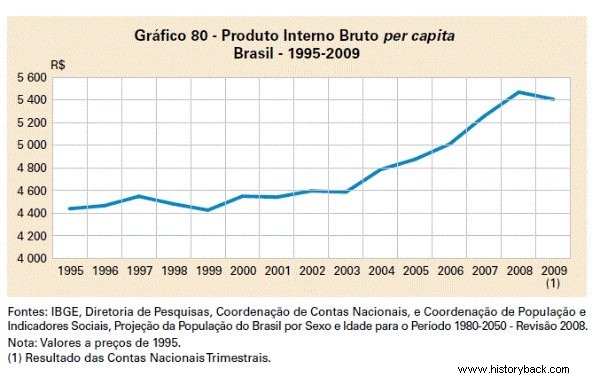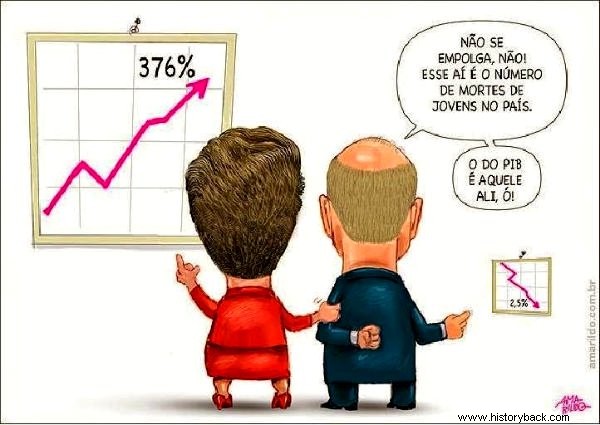The economic crisis from Brazil started around 2014.
For some analysts, the country should only come out of recession in 2020.
Origin
Brazil's economic crisis is attributed to a number of factors, as it would be impossible to pinpoint just one reason to explain it.
We can understand it from Brazil's own historical conditions, such as the fact that the country has been a traditional supplier of raw materials.
Also, due to structural inequalities, when there is economic growth in Brazil, not all segments of society benefit.
Lula's government started with a stabilized country without inflation. All that was needed was to start the economic growth they had promised and it was never delivered.
To this end, the Lula government applied a policy of subsidized interest and cheap credit for businessmen chosen by the government. It also made the government a major investor and carried out numerous public works.

The consequences were an increase in income for the D and E classes, changes in consumption and investment habits, and a strong increase in demand from the Brazilian population. Savings and long-term investments were not encouraged.
The external situation was favorable, as the world was experiencing a strong increase in exports of commodities.
When the world crisis took hold in 2008, the Lula government implemented measures to ensure that the now larger domestic market would continue to sustain Brazilian demand.
Thus, it applied a series of tax exemptions to household appliances, automobiles and construction. Brazil even registered a GDP growth rate of 7.6% in 2010.
However, according to economist Ricardo Amorim, all these measures stimulated consumption and not production.
Dilma Government
However, in 2010, Lula's government ends and his successor Dilma Rousseff does not have the same ability to unite the government around her project.
She repeated the same policies as Lula:subsidized interest continued, cheap credit for businessmen allied with the government, plus exoneration fees, tax exemption and exchange devaluation.
This symbiosis between the government's favorite businessmen ended up generating corruption and inefficiency. This is easy to verify with the investigation known as Lava-Jato.
Likewise, public tariffs were frozen to avoid rising inflation. However, there was a breach of contract with the electricity companies, which ended up passing on the costs to the population.

With these measures, the country entered a technical recession in mid-2014, with industrial production, real wages and GDP falling by 3.8% in 2015.
In 2015, President Dilma Roussef announced a series of tax increases such as the IPI on industrialized products and the IOF on financial transactions.
With all these resolutions, several Brazilian companies in the textile and plastic sector moved to neighboring Paraguay in order to escape the high Brazilian taxes.
In this way, President Dilma's popularity dropped, in the same proportion that she was not able to articulate alliances between her party and its allies.
Then follows the process that culminates in the impeachment of Dilma Rousseff.
Read more:
- Neoliberalism in Brazil
- What is inflation?
- Poverty in Brazil
- Geography Enem:subjects that fall the most
